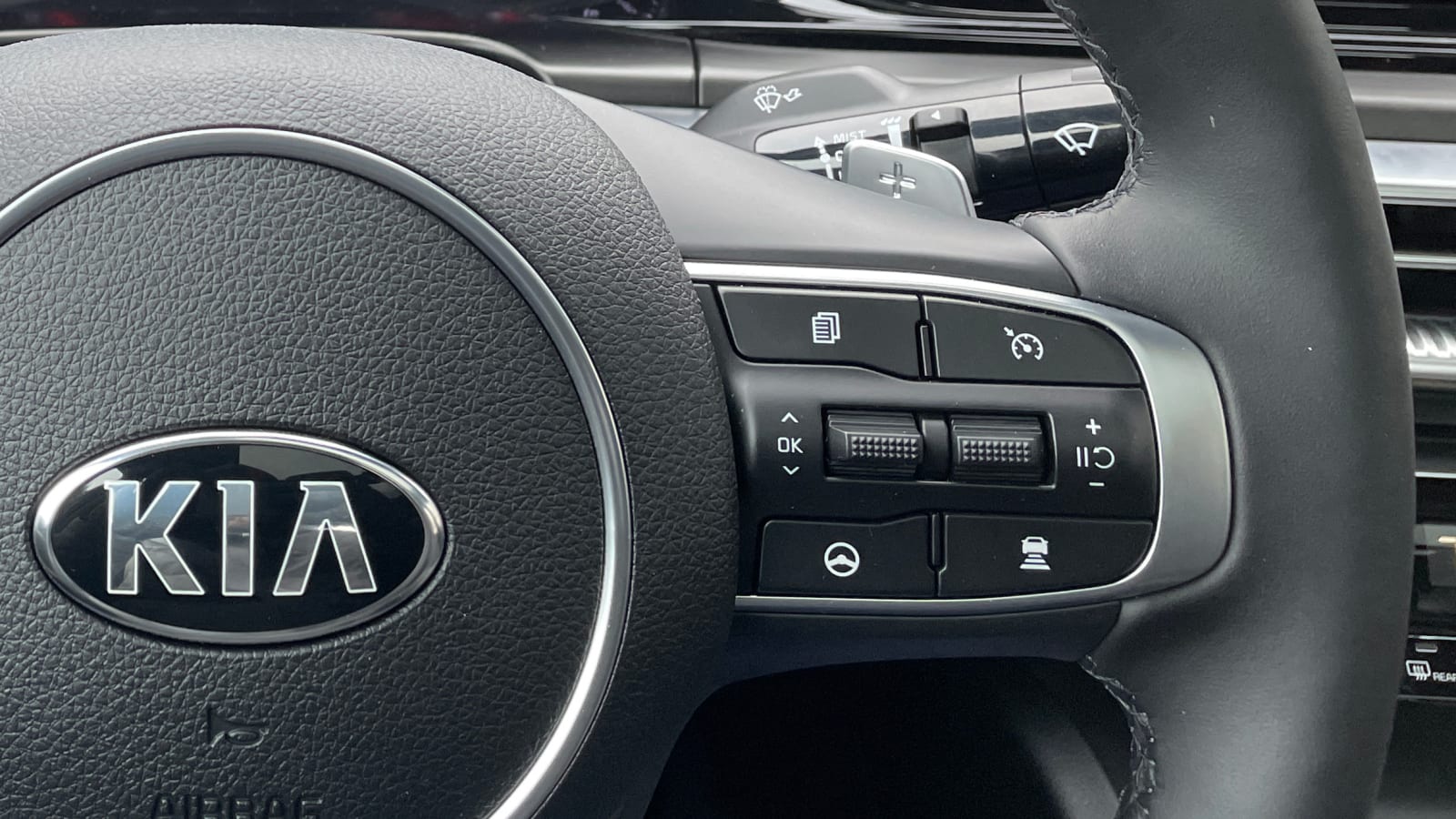There are scads of driving assistants and semi-autonomous systems available on cars these days. Some of them are excellent, while others can be downright irritating. You can assess them by a range of qualities, but one of the best ways of judging a driving assistant’s usefulness is seeing how well it can keep the car centered in its lane. That’s one particular area where Kia’s Highway Driving Assist excels — the same can be said for many Hyundai and Genesis models with the identical system onboard.
Full-featured driving assistants are old news for many luxury brands. Mercedes-Benz, BMW, Volvo and others have offered systems like these for years now — the Mercedes and BMW will even change lanes for you at the flick of a turn signal. And of course, no conversation of driving assistance features would be complete without mention of Tesla. However, today we’re going to talk about the system found in the 2021 Kia K5 GT we sampled recently.
What’s surprising here is just how excellent the Highway Driving Assist system is. It reads the road ahead via a front view camera and front radar. Plus, it uses information from the navigation system to ensure the system is being used on a “highway or motorway.” If you’re not on an approved road, it won’t fully activate. You can also depend on the system to automatically set the cruise control to the road’s speed limit, assuming you’re one who travels at exactly the posted speed.
The system is designed to be a full assistant on the highway at the press of a steering wheel button. It’s capable of full-speed adaptive cruise control and will stay on through stop-and-go traffic. Plus, it controls the steering to keep the car centered in its lane at all speeds. This second part (lane following) is done as masterfully as the smart Mercedes-Benz Active Steering Assist.
We took a multi-hour highway cruise on a number of different types of highways, and it required a shocking little amount of intervention with the Highway Driving Assist switched on. The car would track perfectly in the center on straightaways, gentle bends and even on a number of tighter curves. Most noticeably, it goes beyond where most lane-centering systems would give up on curves. Some lane-centering assistants will nag as much as they help by errantly tugging at the wheel or randomly losing sight of the lines. That rarely happens here, as it helps for hours without becoming an annoyance. Poorly executed driving assistants will require your constant attention to ensure they’re functioning properly — there’s no such added stress with this Kia. Instead, it successfully reduces highway driving stress – you’d be surprised how much fresher you feel at the end of a drive when you’ve simply been monitoring the throttle, brake and steering rather than operating them.
This next point is worthy of debate, but the stretches of time in between necessary steering wheel touches is also on the long side. For experimentation’s sake: We could set it and forget it for periods of time nearing a minute before the system would start reminding us to put our hands back on the wheel. And even then, a quick little tug resets it for another stretch of time. Of course, Hyundai does not call this a hands-free system, and we would recommend keeping your hands on the wheel and at the ready to take over. We were merely testing the system’s parameters.
The car’s ability to track so well for such long periods of time is what’s truly remarkable here. Just like how Mercedes’ system feels like it could interminably travel onward with no intervention, this Highway Driving Assist feels the same. Really, the only things that could trip it up were infrastructure failures where the lane markings either disappeared or had all but faded away. Even then, it didn’t exhibit any poor or unwanted maneuvers. The K5 didn’t lose a beat in nighttime driving, either, and past experiences with a Hyundai Palisade have shown that a steady rain on a winding mountain road didn’t flummox the system either.
The one thing the Kias and Hyundais can’t do (which others like Mercedes-Benz, BMW and Tesla can) is change lanes automatically. You’ll need to buy a Genesis with the system called “Highway Driving Assist II” to get that functionality — the G80 and GV80 also use a new machine learning adaptive cruise program that adjusts its behavior to your driving style. Executing auto lane changes at the tap of a turn signal stalk is more of a gimmick than a legitimately useful feature, though, so Kia and Hyundai not having it yet isn’t a huge issue.



